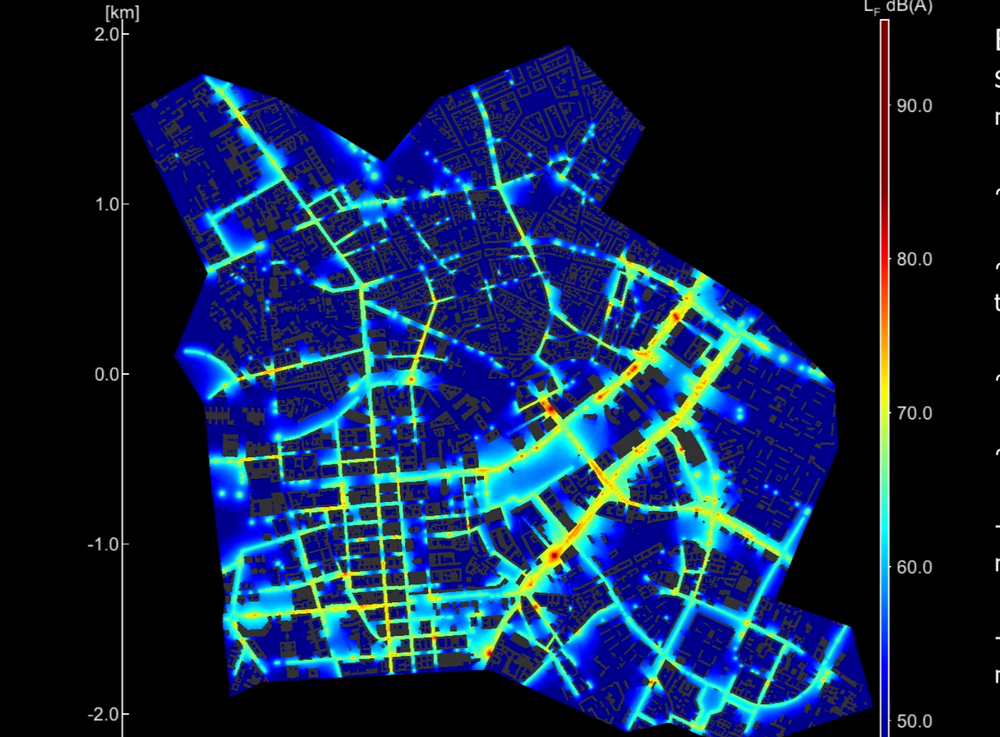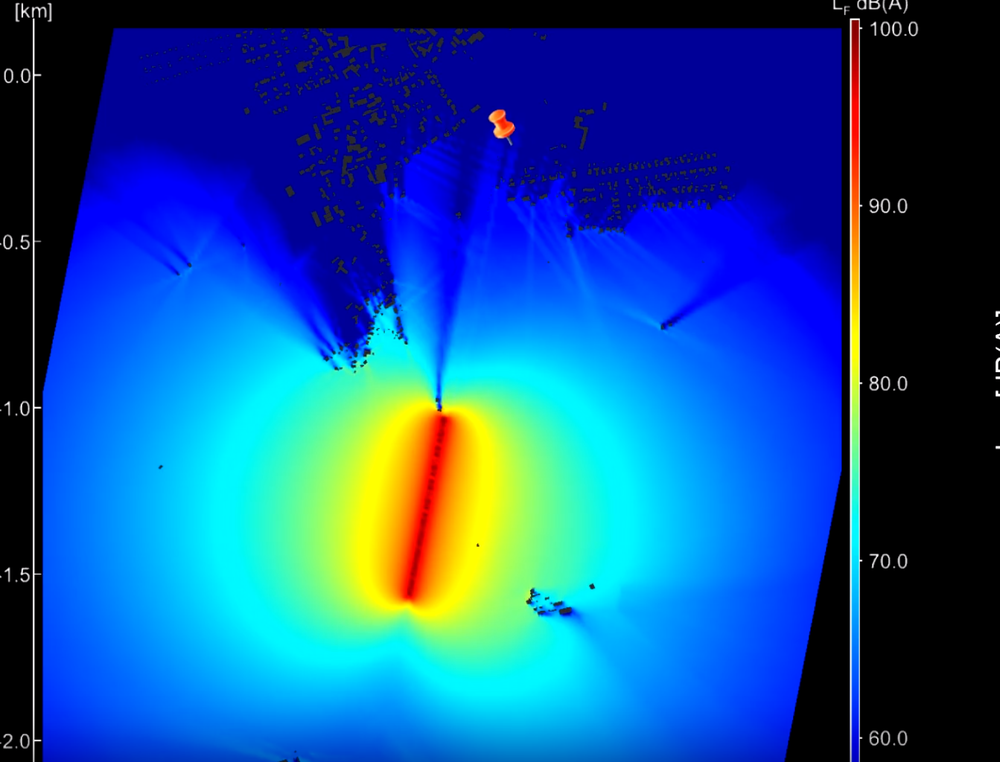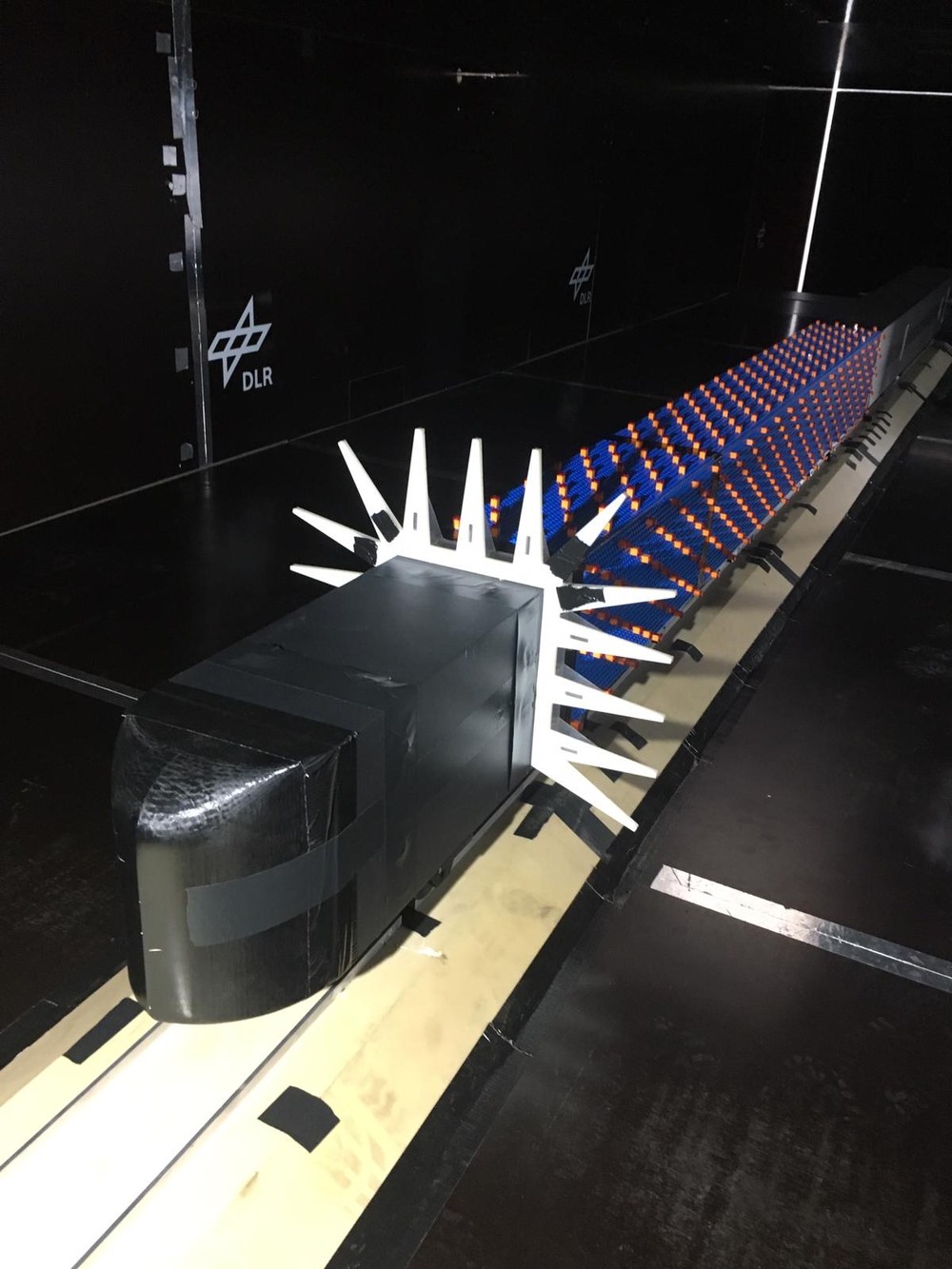Transport Systems
Road and Rail Traffic Noise
In what way does the introduction and use of new mobility concepts influence the noise exposure of people? Can transport concepts such as delivery drones and "Personal Air Vehicles" (PAV) be integrated in urban areas without additional noise pollution? What would noise-reducing strategies look like if a transport system controls itself by means of networking? In order to answer these questions, the group Transport Systems examines mobility and technology concepts for traffic with regard to their noise impact. Various scenarios are simulated microscopically and analysed regarding their potential for noise reduction. The results are so-called noise maps with a high spatial and temporal resolution linked to a microscopic simulation of traffic demand. This provides the basis for an acoustic evaluation of new mobility concepts. Furthermore, we work on the development and application of state-of-the-art measurement techniques for sound source localisation. With this technology the precise location of noise sources on a vehicle can be determined. Individual solutions are developed within the framework of microphone-array technology, which can be used in the wind tunnel for scale models as well as directly on the track.

Road traffic noise
Your consent to the storage of data ('cookies') is required for the playback of this video on Quickchannel.com. You can view and change your current data storage settings at any time under privacy.
Based on the simulation of daily routines of individual persons in their household contexts, trajectories of motor vehicles are determined with a microscopic traffic simulation in an area of Berlin over 24 hours. These trajectories are used to calculate the noise emission of the vehicles and to determine the immission at house façades or on a grid using a noise propagation model. The resulting level-time histories allow a detailed evaluation of the noise pollution.

Rail traffic noise forecast
Your consent to the storage of data ('cookies') is required for the playback of this video on Quickchannel.com. You can view and change your current data storage settings at any time under privacy.
Based on individual trajectories of freight trains, the time-resolved noise emission of the train is calculated. A noise propagation model is used to determine the noise immission on house façades or on a grid. The resulting level-time histories allow a detailed evaluation of the noise effect on individuals.
Aeroacoustics
With the experimental methods available up to now, the relationship between cause and effect in aeroacoustics can neither be derived by solely measuring the turbulent fluctuations in the near field of a flow nor by microphone measurements in its far field. Although acoustic measurement methods, such as near-field holography or microphone-array technology, provide information about the position and strength of the respective sound sources, the mechanism generating aeroacoustic sources cannot be investigated with these methods due to missing information about the fluctuations in the near field.
The development and application of methods used to determine the relationship between cause and effect in aeroacoustics is a main focus of the Transport Systems group. One approach is to combine two experimental methods: Measuring the flow velocity by means of Particle Image Velocimetry (PIV) in one plane provides information about the causal fluctuations in the flow. At the same time, the emitted sound waves in the acoustic far field are recorded by microphones. By analysing the cross-correlation between fluctuation quantities derived from the measurement results, flow structures that are part of the sound-generating process can be identified.
Temporal and spatial development of the correlation coefficients between the pressure variations in the acoustic far field and the velocity fluctuations in the area of the slat cove of a high-lift system.
Aerodynamics in Rail Freight Traffic

In order to increase the capacities of rail freight transport and to make it more competitive, trains must be operated quickly, safely, efficiently and with reduced noise levels in the future. With transport speeds of up to 160 km/h and the increased use of lightweight materials in wagon design, aerodynamics plays a decisive role. On the one hand, this concerns the energy saving potential by reducing the aerodynamic influence in terms of the driving resistance. On the other hand, it is necessary to ensure crosswind stability. The group Transport Systems performs aerodynamic investigations with the help of numerical calculations and wind tunnel tests to improve crosswind stability and to reduce aerodynamic drag. A special feature of these investigations is the use of wind tunnel facilities, allowing a realistic representation of the underbody flow and unsteady crosswind conditions.
In addition, the group develops technologies to predict increased noise emissions by measurements on the vehicle and to prevent noise by applying appropriate measures.
